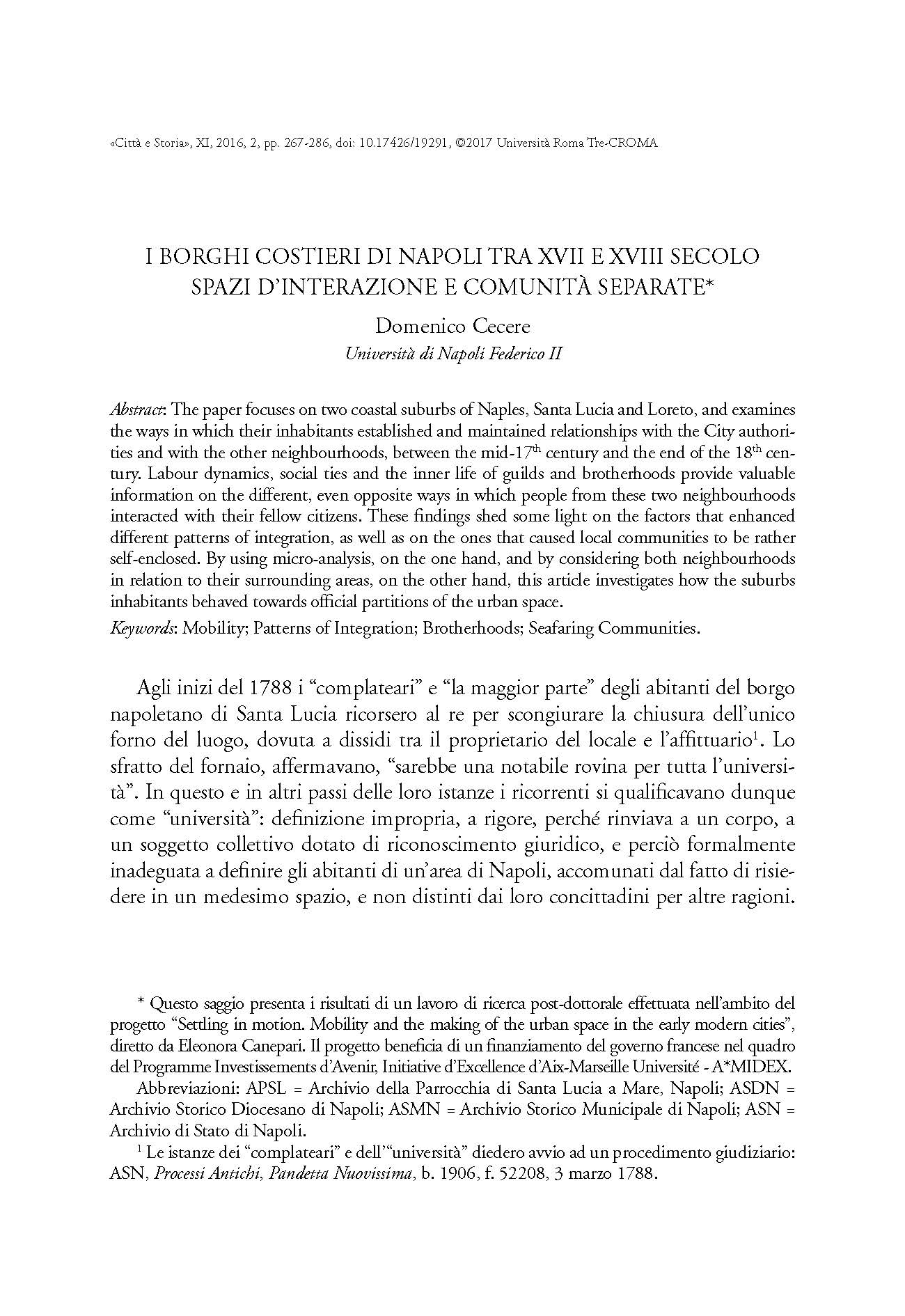I borghi costieri di Napoli tra XVII e XVIII secolo: spazi d’interazione e comunità separate
6,00 €
The paper focuses on two coastal suburbs of Naples, Santa Lucia and Loreto, and examines
the ways in which their inhabitants established and maintained relationships with the City authorities
and with the other neighbourhoods, between the mid-17th century and the end of the 18th century.
Labour dynamics, social ties and the inner life of guilds and brotherhoods provide valuable
information on the different, even opposite ways in which people from these two neighbourhoods
interacted with their fellow citizens. These findings shed some light on the factors that enhanced
different patterns of integration, as well as on the ones that caused local communities to be rather
self-enclosed. By using micro-analysis, on the one hand, and by considering both neighbourhoods
in relation to their surrounding areas, on the other hand, this article investigates how the suburbs
inhabitants behaved towards official partitions of the urban space.
The paper focuses on two coastal suburbs of Naples, Santa Lucia and Loreto, and examines
the ways in which their inhabitants established and maintained relationships with the City authorities
and with the other neighbourhoods, between the mid-17th century and the end of the 18th century.
Labour dynamics, social ties and the inner life of guilds and brotherhoods provide valuable
information on the different, even opposite ways in which people from these two neighbourhoods
interacted with their fellow citizens. These findings shed some light on the factors that enhanced
different patterns of integration, as well as on the ones that caused local communities to be rather
self-enclosed. By using micro-analysis, on the one hand, and by considering both neighbourhoods
in relation to their surrounding areas, on the other hand, this article investigates how the suburbs
inhabitants behaved towards official partitions of the urban space.

